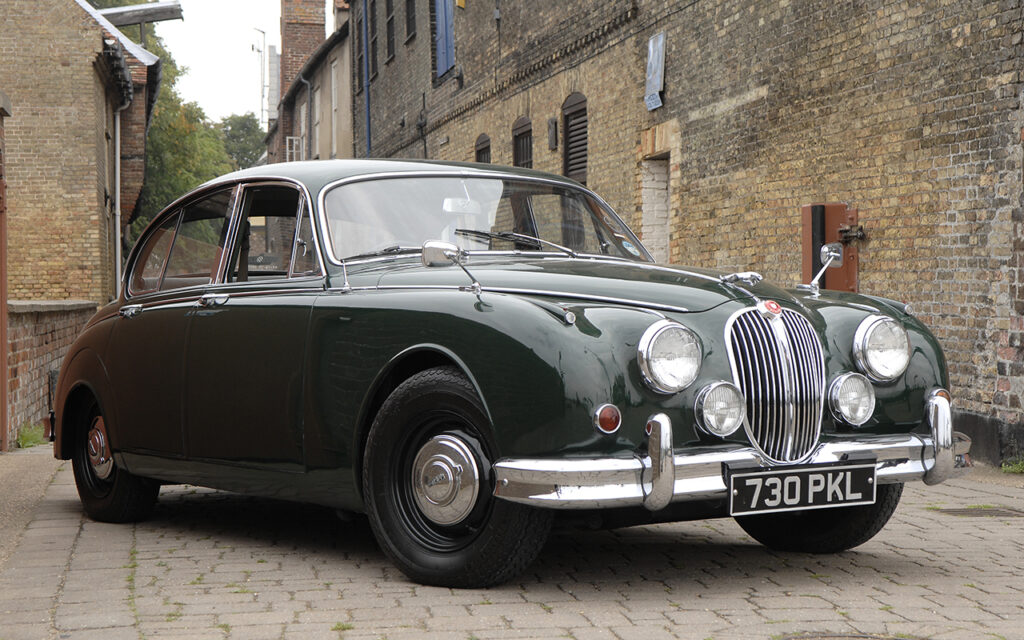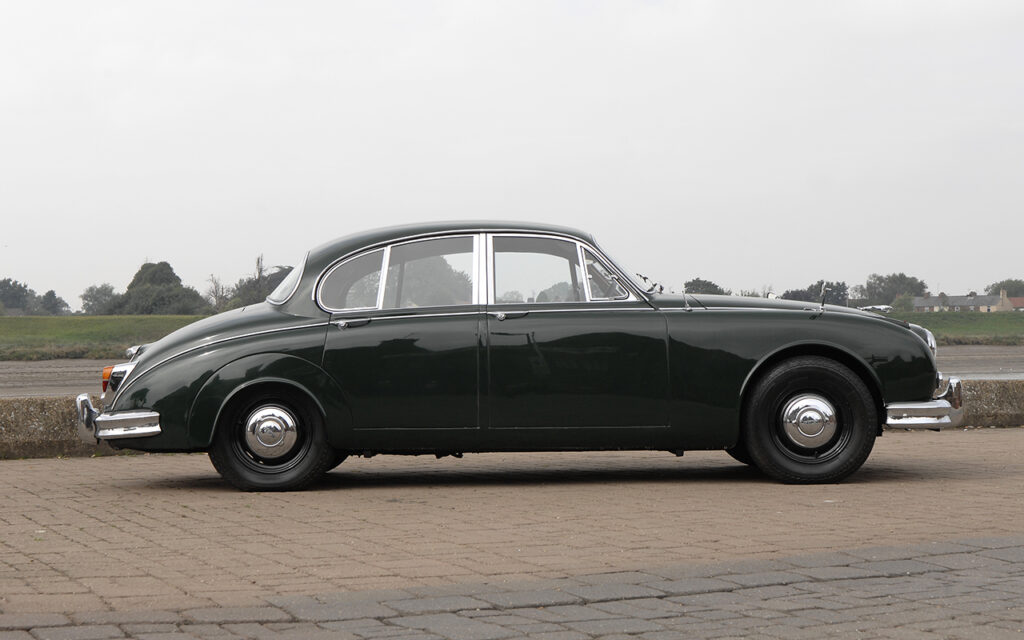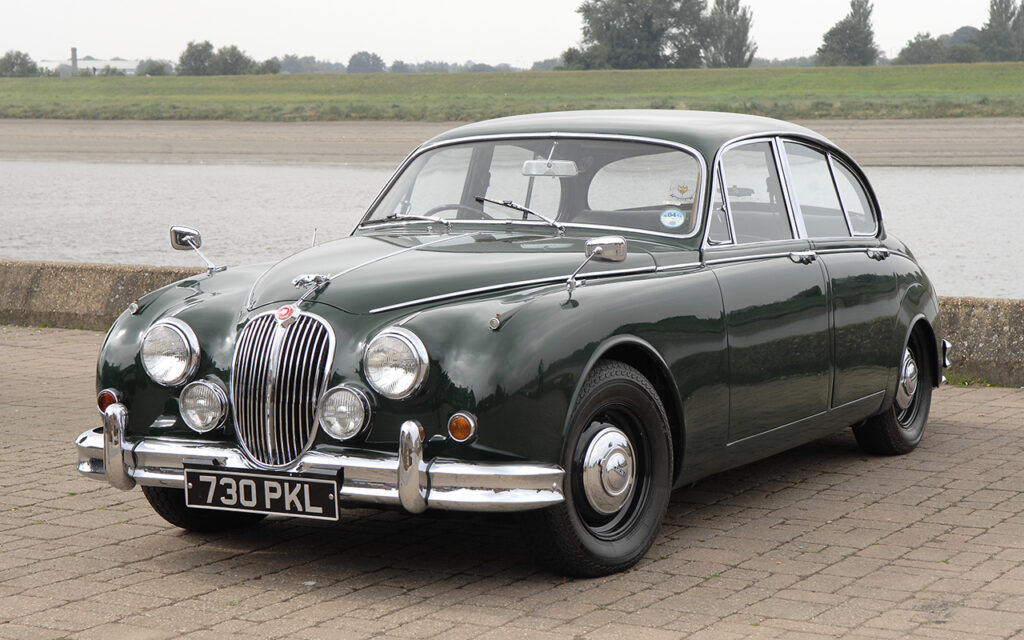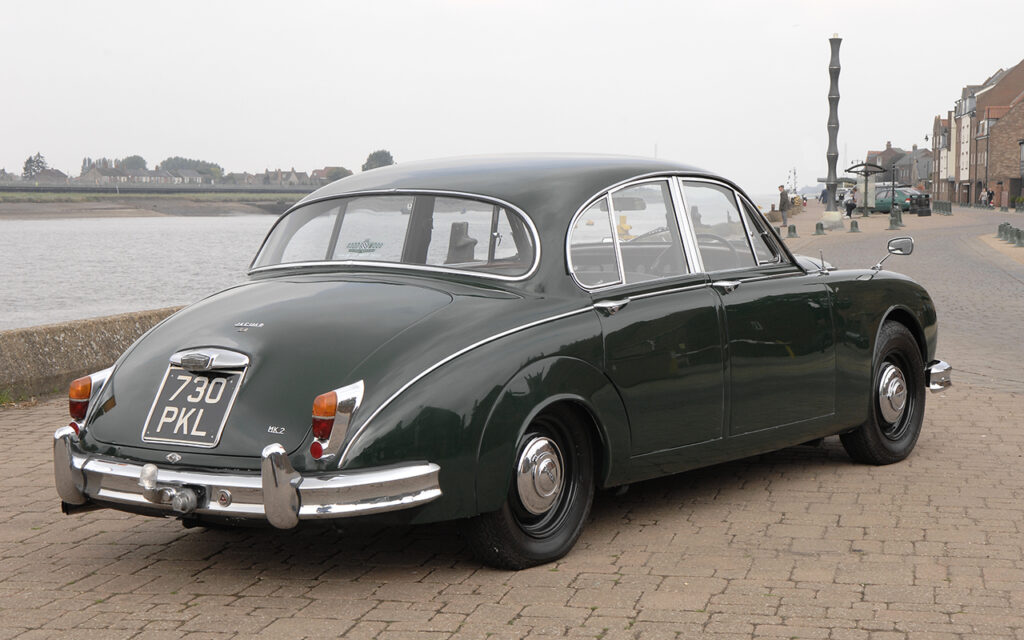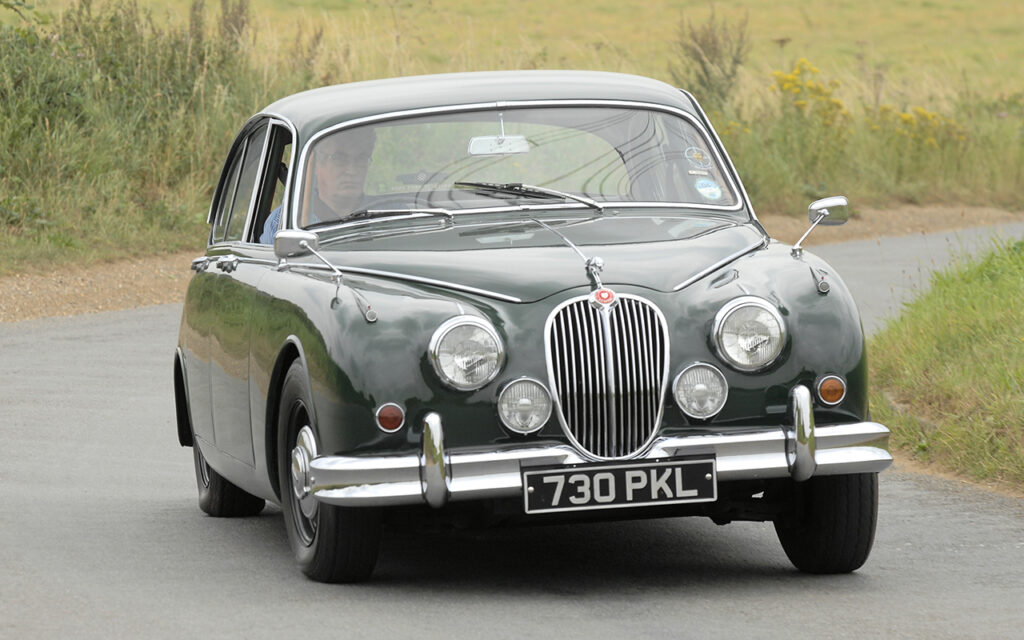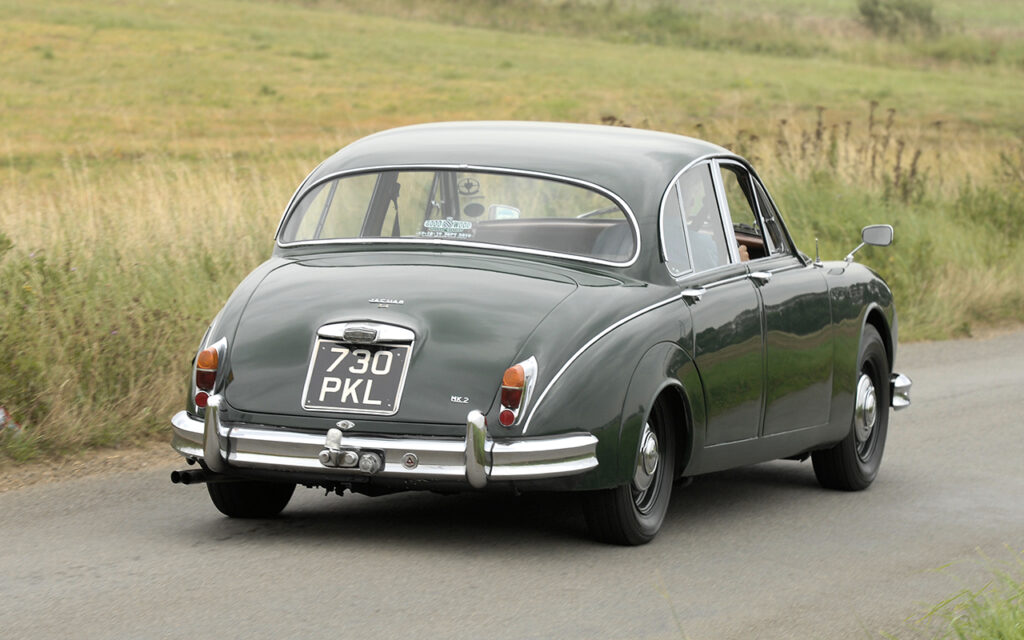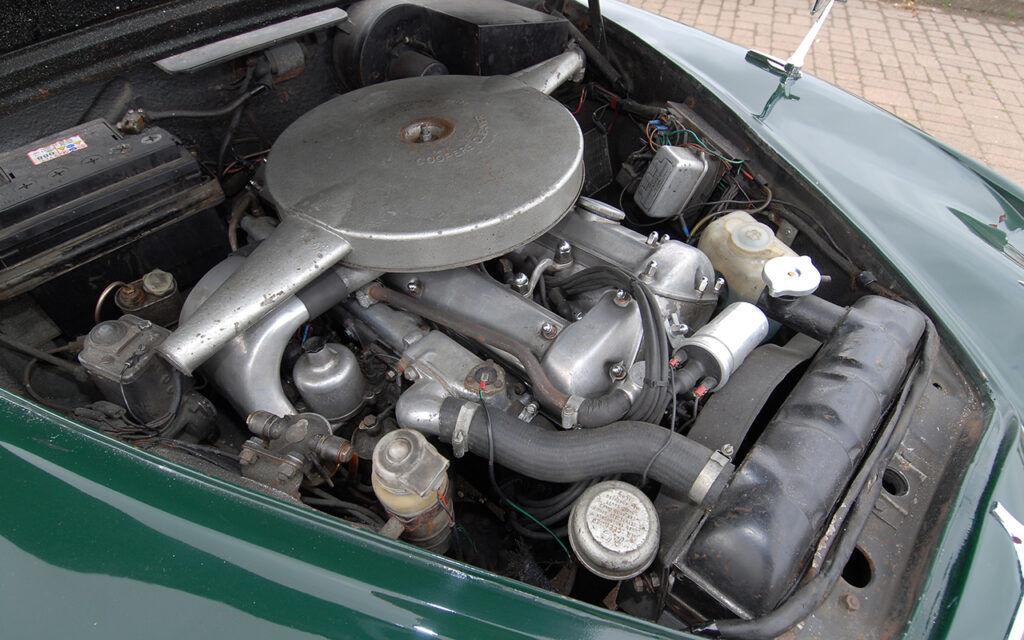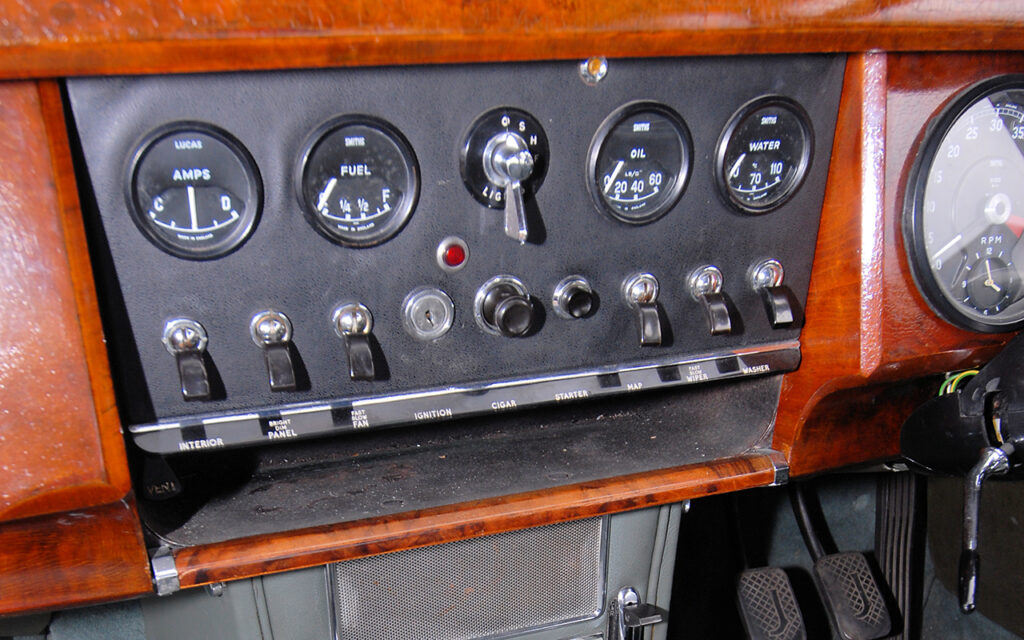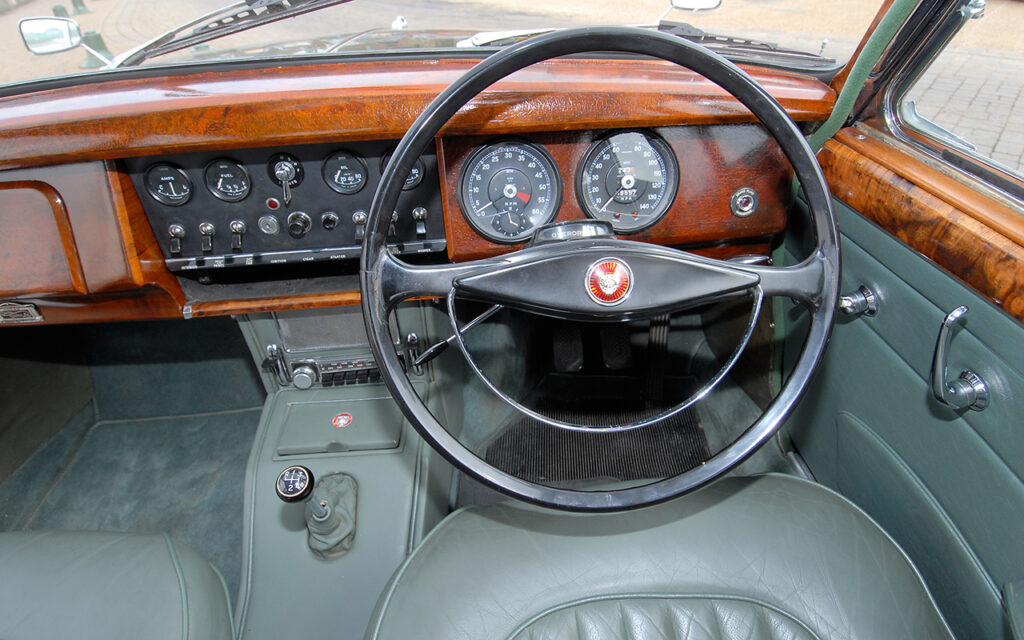It’s the classic 60s icon that everyone wants – but there’s plenty to watch for when buying a Jaguar Mk2. Here’s how to do it
The profile of the Jaguar Mk2 has been raised above and beyond similar Jaguar models of the 60s thanks to bank robbers and Inspector Morse. Consequently, even abandoned projects and tatty imports sell for big money; there are often clear price differences between a 2.4 and 3.8, with the latter offering better performance statistics.
The Mk2 badge is also very popular, more so than the Daimler 250 – which is the same car but with a V8 engine, yet is often cheaper. The similar-shaped models that replaced the Mk2, such as the 240 and 340, are also less expensive.
Produced between 1959 and 1967, the Mk2 replaced the Mk1 that first appeared in 1955. That car only became known as the Mk1 after production had finished; at the time of manufacture, it was named according to the car’s XK engine sizes – 2.4 and 3.4. The Mk1’s specification soon made it a market leader, being a modern monocoque design with independent front suspension and powered by the well-known XK engine. It also helped to pave the way for the Mk2, whose specification boasted all-round disc brakes, optional power-assisted steering and leather upholstery. Nearly 84,000 Mk2s were produced before the model was discontinued in September 1967, replaced by the 240 and 340.
If you are thinking about buying a Mk2, consider its size. At 4.59m (181in) long, it’s a similar length to a modern Jaguar X-Type, although it’s slimmer by 30cm, which is a noticeable amount for a single garage. Surprisingly, it’s a little taller than the modern car. Even more surprising is the similarity in weight, around the one-and-a-half-tonnes.

The sofa-sized front and rear seats fitted to most Mk2 models provide an insight into the level of leather-upholstered luxury this model offered when it was new, complemented by a full-width wooden dashboard. On automatic models, there’s an uncluttered feel to the gearbox tunnel because the gear selector is mounted on the steering column, while the handbrake on all models is discreetly mounted on the outside of the driver’s seat base.
Seatbelts were only an optional extra until they became compulsory on new cars (and then only for the front seats) in 1965, so don’t be surprised if they are not present on a pre-65 Mk2. Front seatbelt mounting points should be fitted as standard to these cars from 1962 onwards, so seatbelts can be fitted. Pre-62 cars will need reinforcements and mounting points added; there are no rear seatbelts and mounting points on any model.
On the road, a Mk2 should feel typical of many a rear-wheel-drive saloon with a live axle behind the back seats, but, in many cases, a little more refined thanks to the positioning of the wheels being close to all four corners. A 2.4-litre Mk2 may feel disappointingly sluggish; it’s the slowest of all models with 120bhp at the flywheel, which has a 0-60mph time of a little over 17 seconds.
The larger 3.4-litre engine reduces acceleration time by almost five seconds, whereas the 3.8 is the most impressive, with a 0-60mph time of 8.5 seconds. Despite those differences, top speeds are less noticeable because all models of Mk2 are capable of easily exceeding the national limit on a motorway.
The only potential disadvantage to such impressive performance figures is fuel economy, which generally hovers around 20mpg, but what you spend on fuel, you save on the free car tax and, possibly, cheap classic car insurance.
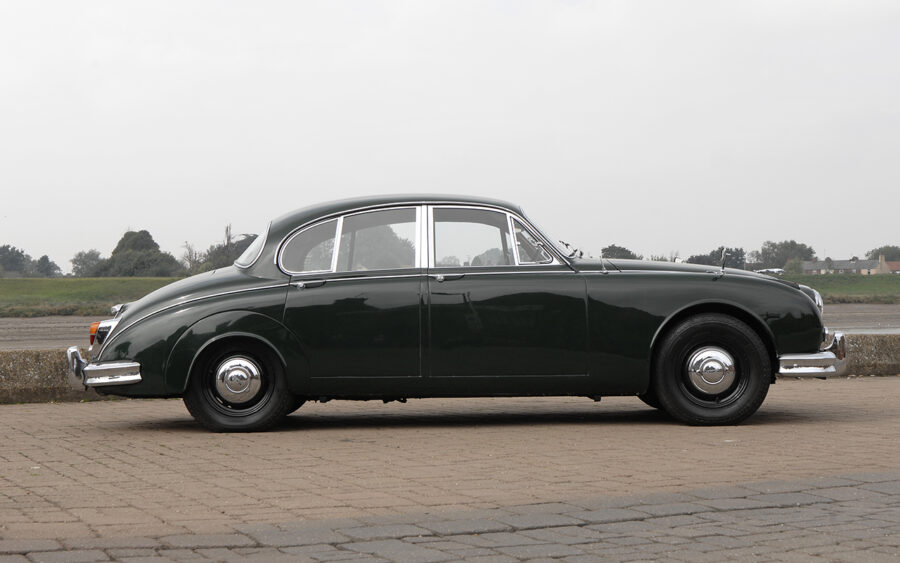
Bodywork
A wise starting point when considering the purchase of a Mk2 is to look at the most expensive repairs associated with these models – corrosion. The modern unitary construction of the all-steel bodywork of the Mk2 was innovative in the 50s and 60s, but means the bodywork cannot be separated from its underpinnings to leave a rolling assembly, unlike an XK120/140/150, for instance.
Consequently, the structural integrity of the bodywork is important, so check the sills, chassis legs, floors and jacking points are all intact. Look for cracking around the rear section of each front wing where it’s attached to the sill – this is a common area for corrosion and is expensive to repair. Water traps that can result in corrosion include the chassis legs, jacking points, doors, boot, around the A-posts and the rear seat.
Water can leak through via the rear doors, soak the rear carpets and corrode the rear floors. The front-most mounting point for the rear leaf springs is underneath the rear floors, so it can corrode and weaken too. Lift the carpets and the rear seat base to check the condition of the floors and also to look underneath them. Replacement panels and repair panels are available and vary in price. Budget for around £70 for a jacking point, for example, and around £30 for a floor repair panel. A replacement spare wheel well costs around £420 and a door skin is around £90.
Check all wheel arches for corrosion; these are potentially expensive to repair. Trim may have been fitted along the lips of the arches, so feel around it to check for rust, being careful on any sharp edges. Rear arch outer repair panels vary from around £300 to £1500, plus about £200 to £250 for a larger inner rear arch section. Similarly, the front wings can corrode and, while a replacement will cost around £4000, there are several repair panels ranging in price from around £70 to £600, so a rusty wing can sometimes be rebuilt.
Sills are seemingly less costly to repair, with outer sill repair panels costing around £200 and inners about £80, but once the old metalwork has been removed, there may be more corrosion to cut away before clean, rot-free metal can be found.
Don’t expect a sill replacement to be completed quickly; the process can take around 40 hours. This is because the bottom of the front wing needs to be cut to separate it from the sill, closing panels are often required, the bodyshell needs to be secured to a jig to maintain its shape, and the doors and most of the interior need to be removed.
One advantage when it comes to looking for corrosion, especially on the underside, is that very little is hidden. So, providing you can safely inspect the underneath of the vehicle, you should be able to spot any problematic rust. Some rear suspension mounting points need to be checked for corrosion, including the hangers and mounts for the rear leaf springs and those for the Panhard rod (fitted between the rear axle and the offside rear of the bodywork). Budget for around £100 for an upper reinforcing channel for the rear leaf springs and a similar amount for a mounting bracket for the Panhard rod.
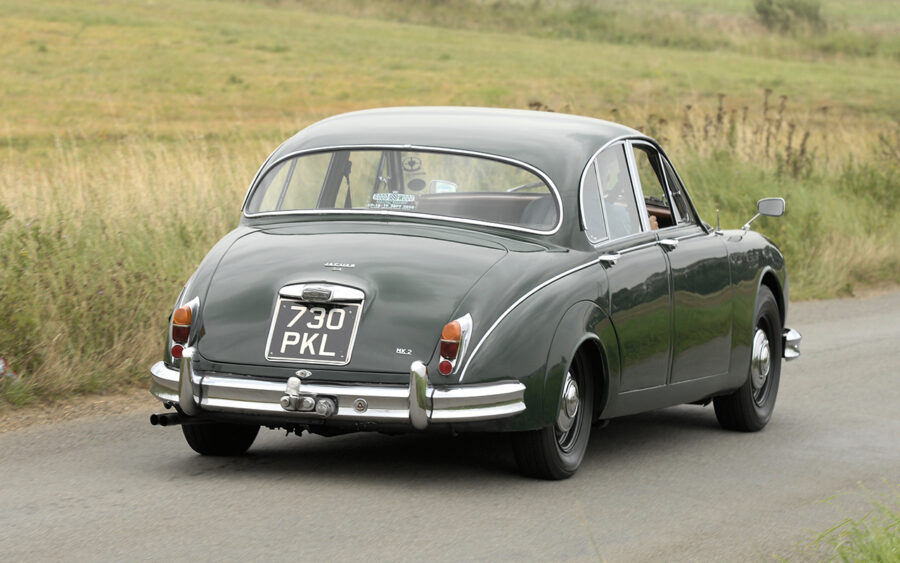
Suspension
At the front of the Mk2, suspension consists of upper and lower wishbones with a shock absorber inside a coil spring resting on the lower wishbone. Both wishbones are attached to the upright via ball-joints and there’s also an anti-roll bar. At the rear, there is a live axle with leaf springs, telescopic shock absorbers, upper link arms and a Panhard rod.
Typical suspension problems include worn bushes, broken and corroded coil and leaf springs, leaky dampers and worn anti roll bar drop-links. Some of these problems can be spotted through a visual inspection of the suspension (look for perished rubber, in particular), or can be heard as a knocking noise during a test drive.
Many suspension components are reasonably priced. A front coil spring, for example, costs around £40, although we recommend changing both fronts together. A set of rear leaf springs costs £250 to £500 or so. A Panhard rod costs around £60, and budget for around £80 for a rear telescopic damper. Repair kits and upgrade kits are sometimes a worthwhile investment, and a bonus if they have already been fitted because, in some cases, they can be quite expensive. A rear conversion to coil springs can cost nearly £3,000, and an uprated front anti-roll bar and coil spring kit £600.
These can be tempting modifications, but check the full details of anything fitted and whether it’s what you want. A conversion from standard rubber suspension bushes to polyurethane, for instance, may result in a harsh ride quality and potential stress fractures in the suspension mounting points if a suitable Shore hardness of bush hasn’t been selected. Ask the seller whether the suspension is routinely lubricated – there are several grease points that require multipurpose grease to be pumped through.
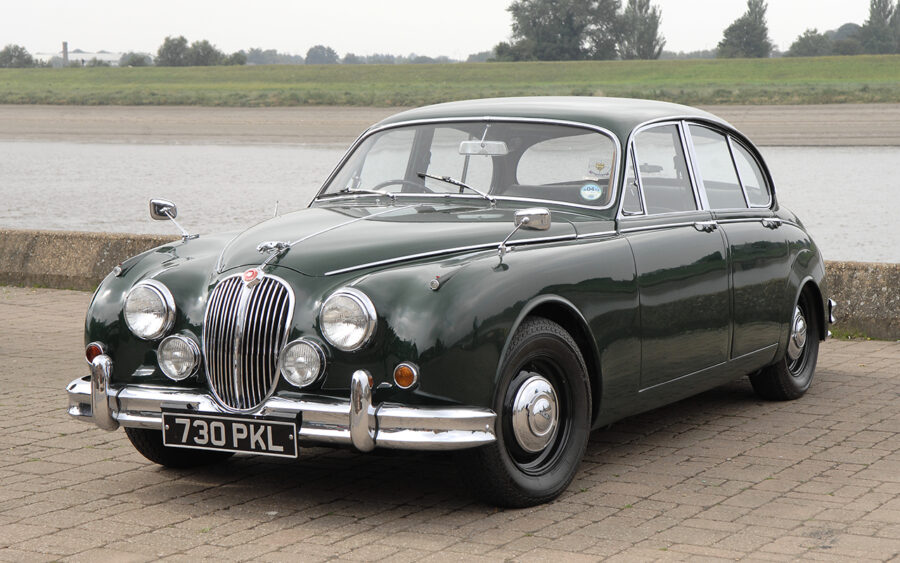
Brakes
The standard braking system comprises a servo-assisted single-circuit system with disc brakes and twin-piston Dunlop calipers all round, although many have been uprated at the front to four-pots from specialists such as Coopercraft and Zeus. The handbrake operates a separate set of brake pads on the rear discs, which are mechanically operated by the handbrake cable.
Standard brakes should be routinely stripped, cleaned and inspected to avoid seized components, especially the brake pads, which can become stuck. While new pads are cheap at £25 to £50 a set, an exchange rear caliper isn’t, at around £630. A single-piston front cylinder (there are two per caliper) is about £150 to £200. Neglectful maintenance can result in more brake-related problems, especially with the mechanical handbrake, which operates a separate set of brake pads on the rear discs.
All the handbrake components can be stripped, cleaned and rebuilt if required, but it’s time-consuming and if new parts are required some are expensive, such as the handbrake mechanism attached at each brake disc, which cost around £300 each. So, make sure the handbrake is working properly and don’t be persuaded that it’s not required for an MOT-exempt vehicle, especially one with an automatic gearbox. Upgraded brakes, such as front four-pots, seem to be a worthwhile modification and an acceptable period upgrade. And, if they are already fitted, this saves £600 to £900 for the cost of the conversion.
Steering and tyres
Power-assisted steering is fitted to some Mk2 models. In all cases, check for smoothness and consistency of steering during a test drive. Worn steering boxes and movement in the column can generally all be fixed. Budget for around £1200 for a non-power-assisted reconditioned steering box and over double that for one that is power-assisted. Upgrading to a power-assisted and more modern steering rack costs around £3000.
Steering problems, such as wandering and veering, may not be down to the steering and instead be caused by incorrect wheel alignment and aged or worn tyres. Check the condition of the tyres, looking for uneven tread wear, which may not only suggest the wheel alignment needs adjusting, but could also indicate there’s wear in the suspension. At the same time, look for a four-digit date stamp on the sidewall of each tyre. The last two digits signify the year of manufacture. Tyres generally last for six or seven years, regardless of the depth of the tread. Over time and during heat cycles, the rubber starts to deteriorate and the sidewall starts to weaken, so if the tyres are past their lifespan don’t ignore the cost of a new set of tyres.
The choice of tyres on a Mk2 is critical to the car’s ride quality, handling and road noise. Longstone Classic Tyres (LCT) explains that the Mk2 was originally equipped with Dunlop RS5 cross-ply tyres on 15in-diameter wheels but that Dunlop no longer manufacture classic road tyres. It recommends upgrading to the period radial tyres instead, including the Pirelli Cinturato CA67. Michelin XAS tyres are a little cheaper.
“Pirellis are perfect because they are genuine period tyres with a period carcass made to handle well when fitted to a chassis from that period or used as an alternative to a cross-ply,” says Dougal Cawley at LCT. “The attraction to the 180HR15 Michelin XAS is that it is a slightly odd special tyre size that is tall and thin, thereby keeping the steering light. Also, the XAS was developed in conjunction with the Citroën DS to make it stop wandering at cruising speeds on the increasing number of dual carriageways that were popping up over Europe in the Sixties. In other words, it was making cars like a Citroën DS or Mk2 Jaguar more suited to modern roads.”
The Mk2’s steering is not only quite heavy, but Dougal says that at cruising speeds it tends to wander and follow the unevenness in the road, so you have to correct it frequently to keep the car travelling in a straight line, which gets worse with wider tyres. This is where he favours the Michelin XAS tyres, explaining, “The asymmetric carcass and tread pattern combined with the rounded thin footprint overcome a lot of these derogatory effects. Fitting XAS is like increasing the caster of your front axle without making the steering heavier. XAS helps a classic car drive in a straight line.”
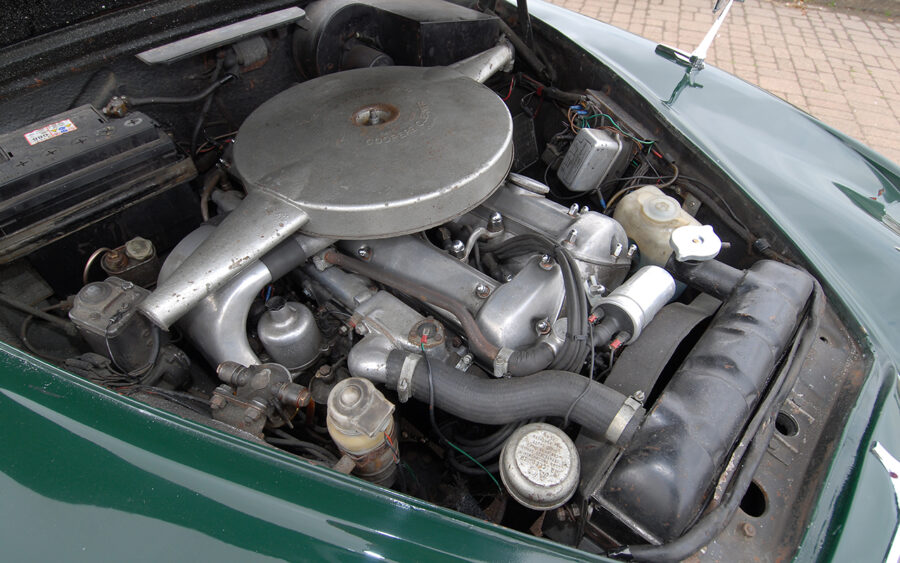
Engine
The Mk2 is powered by the XK engine, displacing 2.4, 3.4 or 3.8 litres. With a cast iron engine block and alloy overhead twin[1]cam cylinder head, the XK engine is known for its reliability, providing it is routinely maintained, so ask if its oil and filter have been changed every year, regardless of mileage because oil degrades over time. Similarly, the engine coolant should be renewed every two years and the engine and radiator flushed out to remove any traces of silt that can potentially block waterways.
Luckily all the Mk2’s XK engines have short cylinder head studs, unlike later XKs, whose studs extend into the coolant galleries and can therefore become corroded and seized. However, if you are looking at a Mk2 with a transplanted later XK engine, check whether the coolant has been routinely changed and the engine flushed every two years, regardless of mileage.
Look around the underside of the engine for oil leaks, particularly where the engine and gearbox are attached. Oil can leak out via the rear main oil seal, which is a rope seal, unless it has been uprated to a later type. Renewal of the seal requires the engine to be removed and stripped. When the engine is running, listen for rattles from the top area, which may be caused by worn camshafts (often caused by worn bucket guides or distortion of the cams through lack of maintenance).
Tim Griffin at CMC warns that while a new set of camshafts will cost around £800, it’s worthwhile having the cylinder head stripped and rebuilt before fitting them, which means the final bill can easily quadruple.
Other engine noises to listen out for include around the front where the timing chains are located. Noise from here could suggest worn tensioners and guides, which involves a partial strip-down to replace them.
When the engine is running, check the oil pressure is showing at least 40psi at 2,500rpm, although it may be difficult to trust the accuracy of the car’s oil pressure gauge. The oil pressure should be 15psi to 20psi at idle, but if it is much lower it may be possible to adjust it with a replacement oil pressure relief valve.
With the engine idling, press the clutch pedal (manual gearbox only). If the engine revs drop, this may mean the centre main thrust bearings are worn. These can be replaced, although this problem, which increases end float in the crankshaft, can result in excessive wear elsewhere, so the engine may need a more thorough strip-down and rebuild.
It’s worth noting that the cost of rebuilding an XK engine isn’t cheap and can easily cost as much as, or more than, an abandoned Mk2 project car itself. Costs do vary between engines due to a more involved rebuild. For example, the 3.8-litre XK has cylinder liners, unlike the smaller engines. These cylinder liners should be removed and inspected for corrosion during a strip-down and rebuild.
After the bodywork, one of the biggest potential bills for a Mk2 is its engine, and it’s difficult to know for certain that an engine won’t fail or develop expensive problems. All you can do is be meticulous in checking it over.
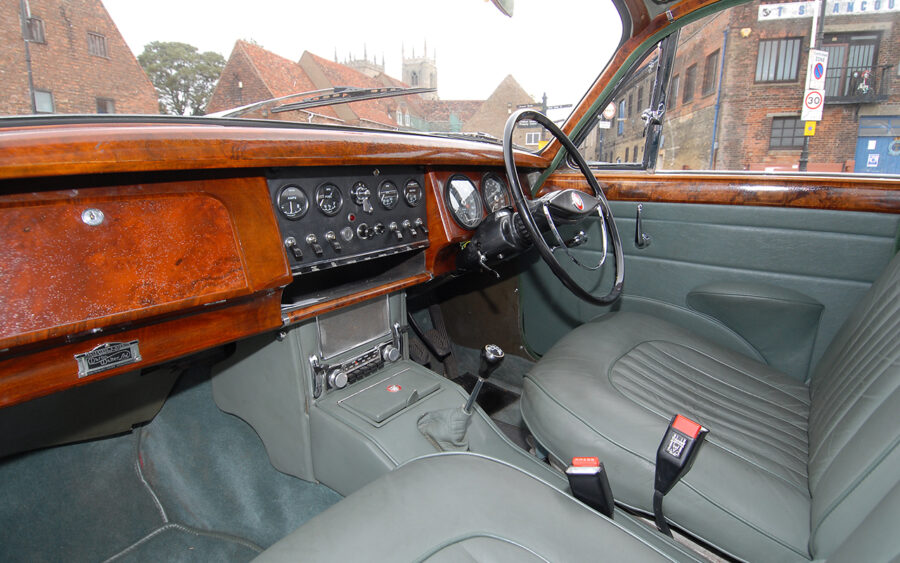
Transmission
Up until September 1965, the four-speed Moss manual gearbox was fitted alongside a three-speed Borg-Warner DG automatic (replaced by the more popular Type-35). Thereafter, Jaguar replaced the Moss ’box with its own four-speed manual, which was equipped with an optional overdrive. The Moss gearbox has no synchromesh in first gear, so only select this gear when stationary and adopt a high degree of mechanical sympathy when easing the gear lever into position. All other gears should be smooth to select; all gears on the Jaguar manual gearbox should also be smooth to select. However, CMC’s Tim Griffin explains that the Moss gearbox, in particular, needs the correct type of gear oil to operate smoothly, which is an SAE-30 grade.
“The Moss gearbox suffers from age- and mileage-related problems, such as worn main bearings at the front and rear” explains Ken Evans of Klassik Transmissions. “The layshaft always wears on the first gear end because of the straight-cut first-gear arrangement. The gaskets leak, together with the layshaft and reverse shaft where it fits into the rear alloy casing. This is due to the rubber O-ring seals hardening over the years. As for synchromesh, this wears particularly on second gear, possibly because most drivers are keen to have a quick change up the gearbox from a spirited acceleration from first.”
Some spare parts are no longer available for the Moss gearbox. From what is available, Ken charges from £750 to overhaul a unit and refresh any bearings, gaskets and seals, and he has devised a method to re-work the synchromesh that improves the gearchange.
Check the clutch operation on all manual gearboxes, ensuring there’s sufficient travel in the pedal and that there are no signs of slipping under acceleration. A clutch kit costs between £250 and £400, but requires the engine to be removed; this isn’t a DIY job unless you have an engine crane.
Automatic gearboxes generally become problematic over time due to wear and tear, resulting in intermittent gearchanges, failure to change gear, slipping due to wear of the clutch plates and/or bands, and excessive transmission noise caused by worn and/or hard components (gears and bushes). If the vehicle starts to creep when drive or reverse is selected, it isn’t a gearbox issue, but is instead caused by failure of a rear-mounted brake valve (which helps to apply the brakes and keep the vehicle stationary until the accelerator pedal is pressed).
According to the independent Borg Warner Specialist (borgwarnerspecialist. co.uk), the brake bands and friction plates often wear inside these gearboxes. A rebuild of an early DG gearbox is often expensive at between £2,000 and £3,000, whereas the later Type-35 gearbox is much cheaper, from around £500.
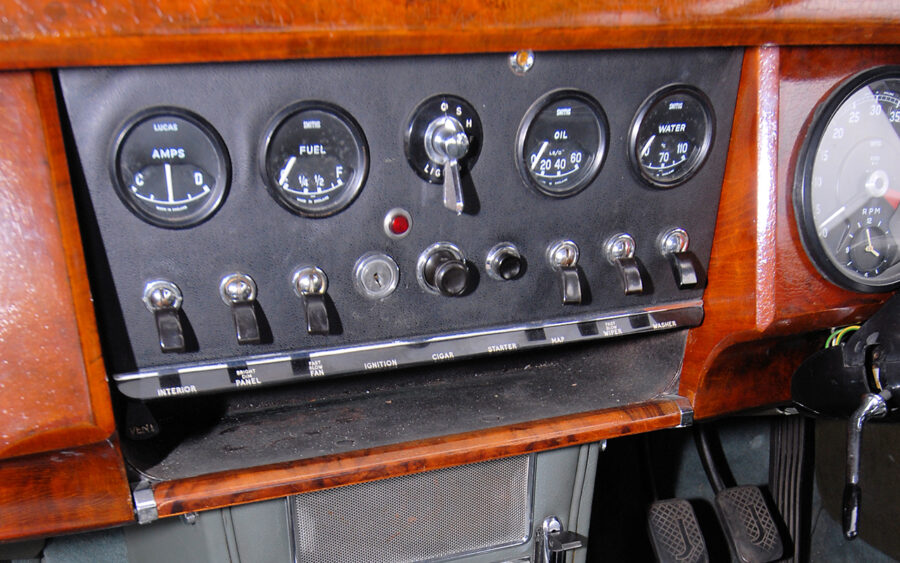
Electrics
The Mk2’s electrical systems initially used a positive earth but were switched to negative earth towards the end of production. Some vehicles have been converted.
Converting to negative earth is feasible, but not as simple as switching over the battery terminals. P&K Thornton can do this conversion, which includes fitting a new battery and terminals, converting the clock, radio and ammeter, fitting a new fuel pump and switching the wires on the ignition coil, wiper motor and heater. Prices vary depending on the work required, but P&K budget for around £1,700 for all the parts and work involved.
Electrical trouble can be caused by a multitude of problems, including earthing issues, broken wiring and water ingress, so check all the electrical equipment works and don’t be convinced that any problem can easily be fixed with a new length of wire or a bit of a clean. If the tachometer doesn’t work, for instance, and its generator has failed (it converts the mechanical movement of the camshaft into an electrical reading for the instrument), a replacement costs around £160.
Look for popular and acceptable upgrades that can be a financial bonus on a car for sale, such as electronic ignition (123ignition conversions can cost £300 to £400), or an alternator instead of a dynamo, which can cost around £600.
Interior
Carefully check the upholstery, carpets, headlining and dashboard. If you are looking at a restoration project and most of the interior needs replacing or even sourcing, then this isn’t going to be cheap. A pair of leather front seat covers costs around £1,000, as do the rear seat covers – vinyl seat covers are roughly half this amount. Pre-cut foam for the seat bases and backs costs around £125 each. A complete carpet set, in wool, costs £400 and a headlining kit costs around £200.
And if all, or parts of, the dashboard and other wood trim are missing or need restoring (there are up to 29 pieces inside a Mk2, including optional rear picnic tables), budget for anything from a few hundred pounds to a few thousand. Myrtle Ltd, for instance, charges from £120 to re-lacquer a section, and around £3,000 to restore all the interior wood. It can also restore original steering wheels for £330.
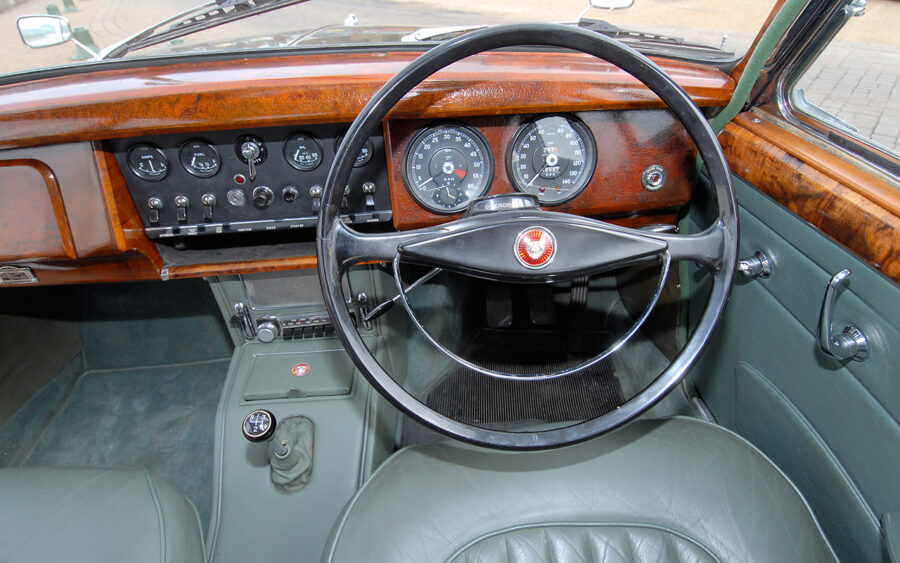
Missing parts
Whether you are buying a barn find, an abandoned project or a concours-condition Mk2, do your homework when it comes to specifications and what should be fitted. If parts are missing, no matter how trivial they may be, they can be expensive to source, or may be impossible. Take the period-looking glass washer bottle for the windscreen washers, which was made by Lucas. If it’s missing or has been replaced with something else, a new one will cost between £125 and £225.
If the door seals are worn or missing, budget for around £125 for a new set. Missing chrome window-winder handles are £80 each. A chrome exterior door handle costs around £100 for one, so if all four are missing or heavily pitted, that’s a noticeable amount of money to bear in mind.
Jaguar Mk2: our verdict
The most desirable Jaguar saloon of the 60s is currently the Mk2, so if you want a piece of the action, be prepared to pay a premium price over the similar-looking 240, 340 and S-type. While originality is a preference, there are numerous acceptable upgrades to look for, including better brakes and suspension, later steering components and modern electrical components (alternator, negative earth, electronic ignition), all of which can mean a saving of hundreds or thousands of pounds.
At present, it seems that bargain-priced Mk 2s are scarce, so anything too cheap probably has something to hide. We recommend investing your money wisely via a specialist or restorer, where you can take your time to look over a car, estimate the cost of any work required and make an informed decision.
